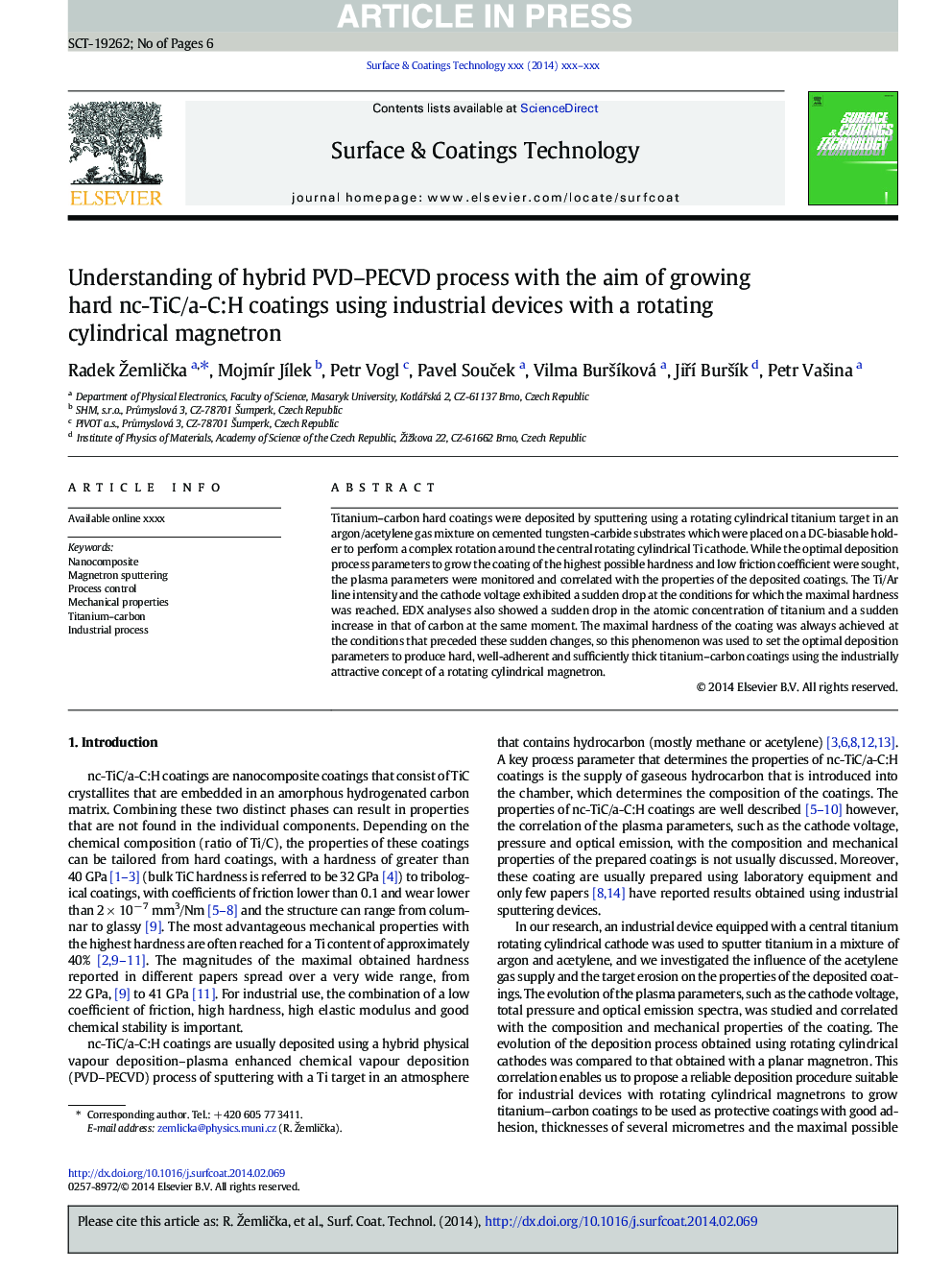| Article ID | Journal | Published Year | Pages | File Type |
|---|---|---|---|---|
| 8027498 | Surface and Coatings Technology | 2014 | 6 Pages |
Abstract
Titanium-carbon hard coatings were deposited by sputtering using a rotating cylindrical titanium target in an argon/acetylene gas mixture on cemented tungsten-carbide substrates which were placed on a DC-biasable holder to perform a complex rotation around the central rotating cylindrical Ti cathode. While the optimal deposition process parameters to grow the coating of the highest possible hardness and low friction coefficient were sought, the plasma parameters were monitored and correlated with the properties of the deposited coatings. The Ti/Ar line intensity and the cathode voltage exhibited a sudden drop at the conditions for which the maximal hardness was reached. EDX analyses also showed a sudden drop in the atomic concentration of titanium and a sudden increase in that of carbon at the same moment. The maximal hardness of the coating was always achieved at the conditions that preceded these sudden changes, so this phenomenon was used to set the optimal deposition parameters to produce hard, well-adherent and sufficiently thick titanium-carbon coatings using the industrially attractive concept of a rotating cylindrical magnetron.
Related Topics
Physical Sciences and Engineering
Materials Science
Nanotechnology
Authors
Radek ŽemliÄka, MojmÃr JÃlek, Petr Vogl, Pavel SouÄek, Vilma BurÅ¡Ãková, JiÅà BurÅ¡Ãk, Petr VaÅ¡ina,
